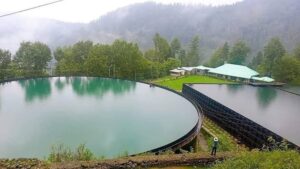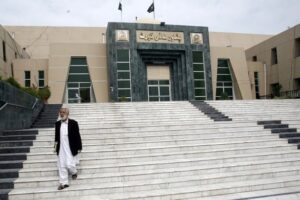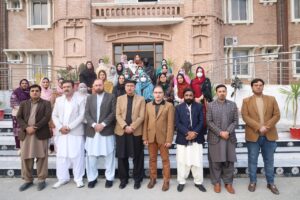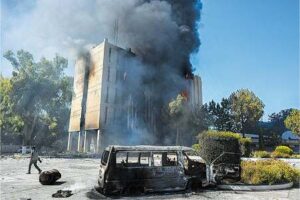PESHAWAR – Parachinar under siege—this is the grim reality for 785,000 people in the city. For the past six months, they have been trapped, isolated, and abandoned. The only road connecting them to the rest of Pakistan remains closed, leaving them without food, medicine, or a safe way out.
As Eid approaches, in Parachinar, there will be no celebrations. Families will remain locked inside their homes, not out of choice, but out of fear. Mothers will not see their sons, children will not visit their grandparents, and fathers will not return home with gifts. This year, Eid in Parachinar will be marked by silence, hunger, and grief.
Read Also: Kurram: Can Peace Ever Overcome the Deep-Rooted Conflict?
A City With No Escape
Parachinar under siege is not just a phrase—it is a reality that has stolen the people’s freedom. The only other route out of the city leads into Afghanistan, where armed groups rule the roads. Anyone who tries to escape faces deadly consequences. Gunmen lurk along the border, waiting for travelers. They do not ask questions. They do not show mercy. To them, killing is an act of faith. The Taliban claim to govern Afghanistan, but in these lawless areas, they hold no power. The people of Parachinar under siege have no safe passage. They are prisoners in their own land.
Hunger, Sickness, and Desperation
In Parachinar, life has become a daily battle. Shops are empty. Hospitals have no medicine. Doctors cannot treat the sick. Last winter, parents buried their children simply because they could not find basic medicines. Cancer and heart patients deteriorated as they waited for treatment that would never come. After months of silence, the government promised security convoys for supply trucks. But that promise turned into a nightmare.
On 21 November 2024, a convoy of 200 vehicles carrying essential supplies set out for the city. But with Parachinar under siege, even a government-led mission was not safe. Near Bagan, militants ambushed the convoy. They opened fire, targeting anyone in sight. By the time the attack ended, over 50 people were dead. Among them were five children and eight women. Their only crime? Trying to survive in Parachinar under siege.
Read Also: Kurram crisis: Relief efforts fall short as tensions rise
False Promises, Endless Violence
In response to the attack, the government arranged peace talks. Tribal elders signed a 14-point agreement, promising to disarm militants and dismantle bunkers. Officials claimed progress. But for the people of Parachinar under siege, nothing changed. The killings continued. People still disappeared. Families kept discovering the bodies of their loved ones, tortured and abandoned. Even government officials became targets—militants attacked the deputy commissioner, barely missing their mark.
A Border That Brings Only War
Parachinar under siege is not a new story. This city shares a 365-kilometer border with Afghanistan. It should be a hub for trade and prosperity, but instead, it has become a battleground. The Bangash tribe, which makes up most of the region’s population, is divided. Old land disputes fuel new violence. But this is not just about land—it is about history, power, and survival. For decades, Parachinar under siege has been a consequence of larger conflicts. British rule left behind sectarian divides. In the 1970s, Pakistan’s military government supported Afghan Mujahideen, allowing extremist ideologies to grow. Afghan refugees changed the region’s demographics, leading to further tensions. The result? A city trapped in a never-ending cycle of bloodshed.
Read Also: Tribal Elders Scrap Peace Deal in Kurram District After Six Bodies Found
A Government That Watches From Afar
Despite the crisis, Chief Minister Ali Amin Gandapur and federal leaders have refused to visit. Even journalists cannot report freely—officials block their entry. The people of Parachinar under siege are left to fend for themselves. They do not ask for much—just the right to live in peace. They want safe roads, access to medicine, and a government that stands with them, not one that watches from a distance.
For now, they wait. And hope.












